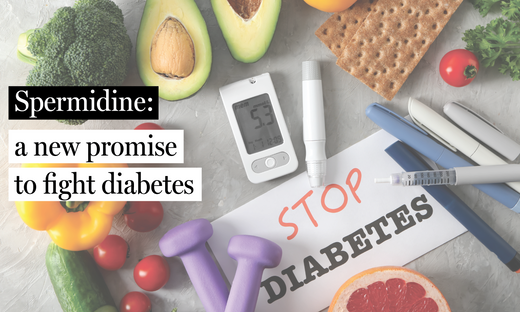
Diabetes: a growing global health challenge
Type 2 diabetes (T2D) is a rapidly growing global health challenge, affecting over 537 million people worldwide. This number is projected to rise to 783 million by 2045 if current trends continue. T2D is a chronic metabolic disorder where the body doesn't use insulin properly, leading to high blood sugar levels (hyperglycemia). Insulin is a hormone that normally helps regulate your blood sugar. In type 2 diabetes, the body's cells become resistant to insulin, and the pancreas can't produce enough to overcome this resistance. This results in elevated blood sugar levels which can damage blood vessels through the formation of advanced glycation end products (AGEs) and accumulation of fatty deposits, both affecting blood flow, as well as increased oxidative stress and activation of protein kinase C which affect the cells lining the blood vessels. The resulting vascular damage is responsible for some of the most severe complications of diabetes in humans, including end-stage renal failure and blindness, and reduces life expectancy. What causes T2D? A complex interplay of genetic predisposition and environmental factors, including obesity, physical inactivity, and poor dietary habits. Despite advancements in managing hyperglycemia, the underlying mechanisms driving the onset and progression of T2D remain incompletely understood. Recent research has shed light on the role of spermidine, a natural polyamine, in modulating a key protein involved in cell death and inflammation in T2D, offering new hope for therapeutic interventions.
The role of spermidine in diabetes
Spermidine is a naturally occurring polyamine with known health-protective and anti-aging properties. Spermidine is essential for autophagy, the cell’s self-cleaning process that helps maintain its normal function by clearing away waste. It primarily works by activating the translation factor eIF5A, which boosts the production of proteins needed for autophagy. Interestingly, eIF5A was once considered the only substrate directly modified by spermidine. A groundbreaking study published in Nature Cell Biology in November 2024 now shows that spermidine plays a significant protection role in diabetes by inhibiting necroptosis (programmed cell death with inflammation) through the inactivation of its key regulator RIPK1 (Receptor-Interacting Protein Kinase 1), through a post-translational modification called acetyl-hypusination.

Spermidine’s dual role in supporting cell cleanup (autophagy) and preventing inflammatory cell death (necroptosis).
eIF5A and RIPK1 are both protein targets of spermidine-mediated post-translational modifications by the enzyme deoxyhypusine synthase (DHPS). The translation factor eIF5A was previously the only known substrate of spermidine-mediated hypusination by DHPS, leading to its activation and the synthesis of specific proteins essential to autophagy. However, the study by Zhang et al. identified RIPK1 as another important target. Spermidine modulates the activation of RIPK1 through a post-translational modification called acetyl-hypusination by DHPS. This modification suppresses RIPK1 kinase activity, thereby inhibiting RIPK1-mediated cell death and inflammation (necroptosis), which is significant in the context of diabetes and vascular complications.
Notes:
Autophagy is the process by which our cells clean themselves by breaking down and recycling damaged or unwanted parts. It's like a "self-cleaning" mechanism that helps keep cells healthy and functioning properly. Necroptosis is a type of programmed cell death where cells die in a way that causes inflammation. Unlike apoptosis, which is controlled and doesn't cause harm, necroptosis can trigger the body's immune response and lead to tissue damage. It’s like a cell dying in a "chaotic" way, which can sometimes make things worse for the body. Necroptosis plays a significant role in the progression of diabetes by contributing to vascular complications and insulin resistance.
© 2025 Melissa Cano. All rights reserved.
The key discoveries
- NAT1 deficiency in mouse vascular endothelial cells leads to progressive diabetic kidney disease. The researchers established a mouse model of progressive diabetes induced by NAT1 (N-acetyltransferase 1) deficiency in vascular endothelial cells. Polymorphisms in the human NAT2 gene, the orthologue of mouse NAT1, have been linked to insulin resistance and other metabolic conditions. NAT1 is an enzyme that acts as an N-acetyltransferase, catalyzing the transfer of an acetyl group from acetyl-CoA to a range of substrates, including aromatic amines. Recent studies have also demonstrated its activity on polyamines, such as spermidine. Additionally, recent research suggests that NAT1 deficiency makes brain vascular endothelial cells more susceptible to necroptosis, contributing to vascular damage in Alzheimer's disease.
- NAT1 deficiency results in reduced spermidine levels and increased RIPK1 activity, causing serious diabetic complications: The study showed that NAT1-deficient cells had reduced levels of spermidine compared to wild-type cells. Spermidine is crucial for a post-translational modification called acetyl-hypusination, which involves the enzyme deoxyhypusine synthase (DHPS). Reduced spermidine levels lead to impaired acetyl-hypusination of RIPK1, resulting in its activation. Activated RIPK1 promotes cell death (apoptosis and necroptosis) and inflammation leading to vascular damage. The vascular damage caused by NAT1 deficiency leads to serious diabetic complications such as diabetic nephropathy, end-stage renal failure, and blindness. Supplementation with spermidine was able to reduce RIPK1-mediated cell death and improve insulin resistance in mice.
- The role of vascular pathology in the progression of diabetes: The study revealed that NAT1 deficiency specifically in vascular endothelial cells was sufficient to induce progressive T2D with vascular kidney pathology. This finding underscores the critical role of vascular pathology in the development and progression of diabetes.
-
Potential therapeutic approaches:
- Inhibition of RIPK1 can rescue insulin resistance and reduce diabetic phenotypes induced by NAT1 deficiency. This suggests that targeting RIPK1 could be a promising therapeutic strategy for treating diabetes and its vascular complications.
- Spermidine supplementation can decrease RIPK1-mediated cell death and improve insulin resistance in NAT1-deficient conditions.
- Human relevance: The study extended its findings to human patients with diabetes. It was observed that spermidine levels were significantly decreased in the vascular tissues of patients with T2D, and there was activation of RIPK1 in kidney biopsy samples from patients with diabetic nephropathy. These results highlight the clinical relevance of the findings.

Spermidine’s role in preventing type 2 diabetes complications.
In wild-type (WT) mice, a modification (called acetyl-hypusination) of RIPK1 mediated by spermidine and
deoxyhypusine synthase (DHPS) inhibits RIPK1 kinase activity. NAT1 deficiency in vascular endothelial cells in Nat1-knockout mice leads to reduced levels of cellular spermidine, impairing acetyl-hypusination of RIPK1 and subsequent RIPK1
kinase activation. This activation of RIPK1 promotes metabolic dysfunction, cell death and inflammation, causing vascular damage. Such damage contributes to insulin resistance and the progression of type 2 diabetes, resulting in complications like nephropathy (kidney damage) and reduced life expectancy. Inhibiting RIPK1 or supplementing spermidine can mitigate these effects.
Figure inspired by Yuan, J. (2022).
© 2025 Melissa Cano. All rights reserved.
What's next?
The findings of this study open up several exciting avenues for future research:
- Clinical trials: Further investigation is needed to explore the efficacy of RIPK1 inhibitors and spermidine supplementation in human patients with T2D. Clinical trials could help determine the safety and effectiveness of these inhibitors in managing diabetes and its complications.
- Genetic studies: Human genetic studies could provide insights into the link between spermidine levels, NAT2 polymorphisms, and vulnerability to diabetes. Understanding these genetic factors could help identify individuals at higher risk and develop personalized treatment strategies.
- Potential new targets of spermidine: The study identified several potential protein targets that can be modified by spermidine beyond RIPK1. Future research could focus on validating these targets and understanding their biological implications, potentially uncovering new therapeutic effects of spermidine.
Advancing diabetes therapy with spermidine
This research represents a significant advancement in our understanding of the role of spermidine in diabetes. By modulating RIPK1-mediated cell death and inflammation, spermidine offers a promising therapeutic approach for managing T2D and its vascular complications. The study's findings highlight the importance of vascular pathology in diabetes and open up new avenues for therapeutic interventions. As we continue to unravel the complex mechanisms underlying diabetes, spermidine and RIPK1 inhibitors could play a crucial role in improving the lives of millions of individuals affected by this chronic disease.







